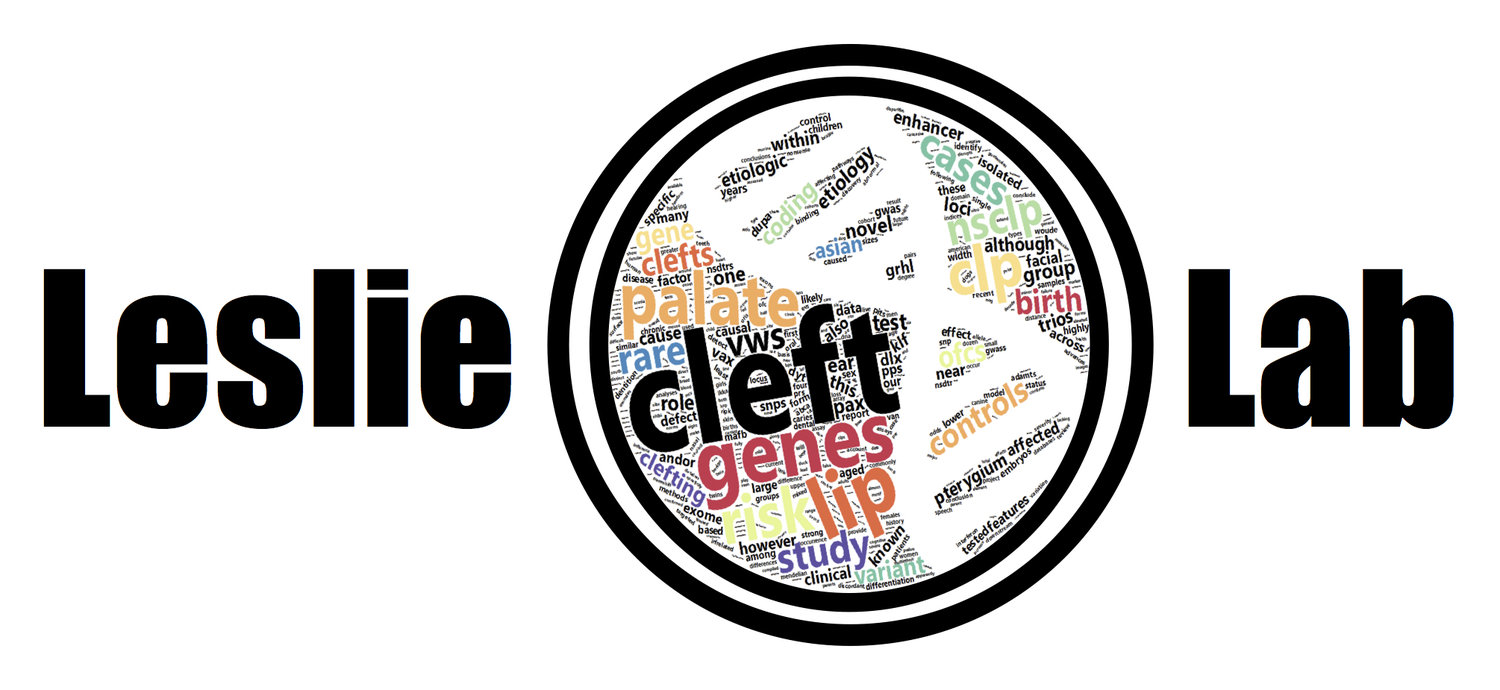Orofacial Clefts
Orofacial clefts (OFCs)—including cleft lip and cleft palate—comprise a significant portion of human structural birth defects and occur in approximately 1 in 700 children worldwide. Most OFCs are isolated, nonsyndromic anomalies and have complex etiology caused by both genetic factors and environmental exposures. These disorders can have significant comorbidities and often require numerous surgical, dental, speech, nutritional, and behavioral interventions throughout life. As such, they impose a significant personal and economic burden on families, and also represent a significant public health challenge. Our interest is in understanding the genetic architecture of OFCs.
The immediate and direct contributions of our research are to genetic counseling and management of care for affected children. In addition, our findings are a resource for studies in mouse and other animal models that provide insight into the basic biology of craniofacial development and the embryonic development of these birth defects.
Van der Woude Syndrome
A major interest of the lab is Van der Woude syndrome, the most common Mendelian OFC syndrome that may account for 2-3% of all clefts. This syndrome is unique in that lower lip pits are the only feature distinguishing it from nonsyndromic OFCs. As a result, it has long served as a Mendelian model for nonsyndromic OFCs.
We are now enrolling families with Van der Woude syndrome into our research study: the Emory Cleft Project!
Phenotypic Heterogeneity
Variable phenotypic expression and reduced penetrance are fundamental aspects of human genetics and are often seen in OFC syndromes and among nonsyndromic families. This results in a blurring of the distinction between syndromic and nonsyndromic OFCs and highlights the impreciseness of the traditional contrast of syndromic versus nonsyndromic congenital anomalies. We view these are parts of a continuous phenotypic spectrum and use deep phenotyping to delineate the relevant phenotypes. We then use genomic data to identify genotype-phenotype correlations and genetic modifiers to explain this heterogeneity.
Heart Defect Modifiers in Down Syndrome
Congenital heart defects (CHD) are the leading cause of morbidity and mortality in infants, affecting nearly 1% of live births. Down syndrome (DS), forms one of the largest identifiable groups among those with CHD. We have taken a different strategy to discover CHD susceptibility genes: 1) we focus on DS (or trisomy 21), a population highly sensitized to CHD and 2) we focus on atrioventricular septal defects (AVSD), a severe septal defect that occurs in 20% of those with DS compared with 1/10,000 among those with euploid chromosome constitution. While increased dosage of chromosome 21 genes clearly contributes to this risk, trisomy 21 is not sufficient by itself to cause CHD; close to 50% of infants with DS have structurally normal hearts.
We are part of the Gabriella Miller Kids First Pediatric Research Program, an NIH initiative to generate whole genome sequence data for pediatric cancers and structural birth defects. The funding for the program was spurred by an intrepid girl who fought cancer and Congress.

